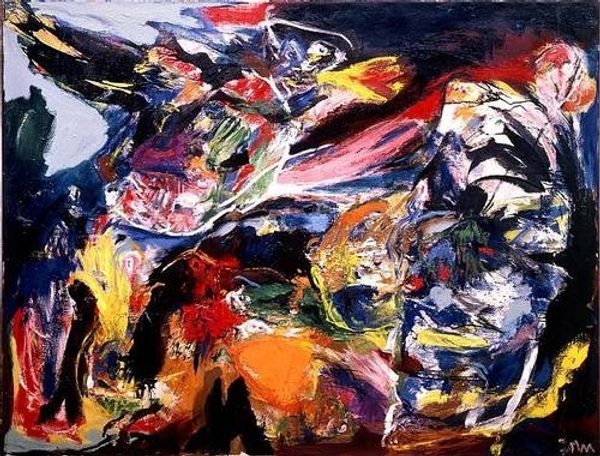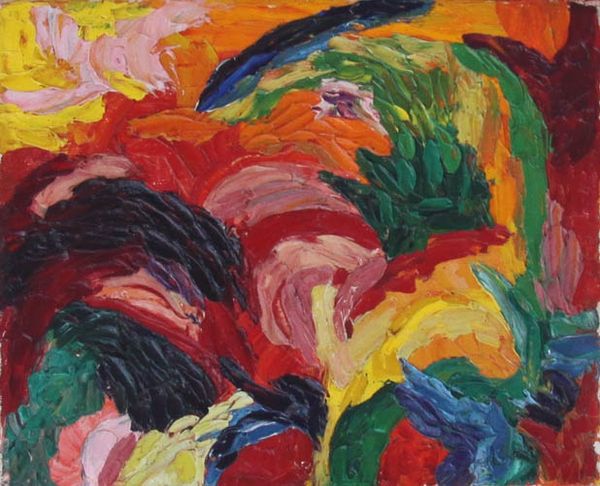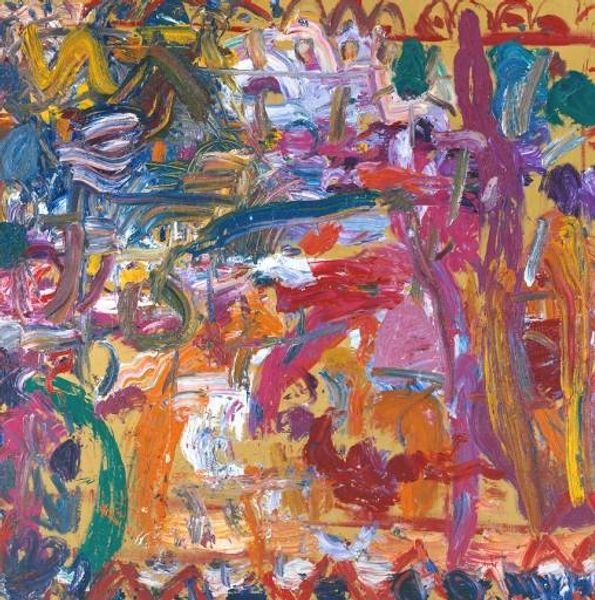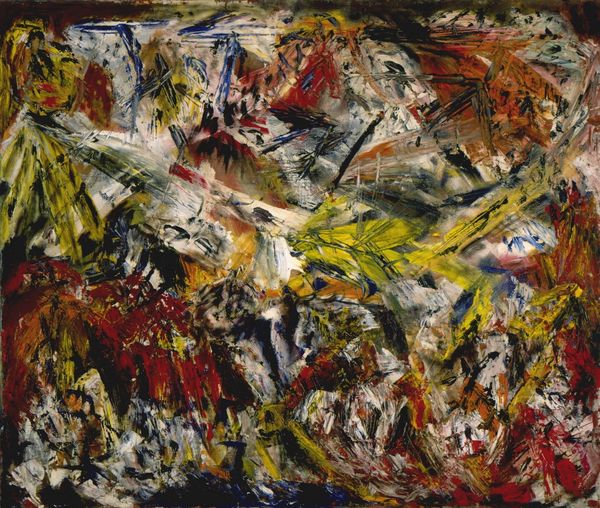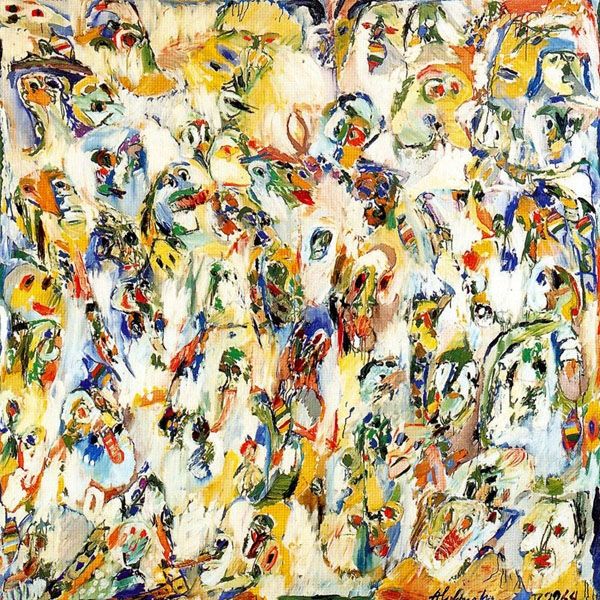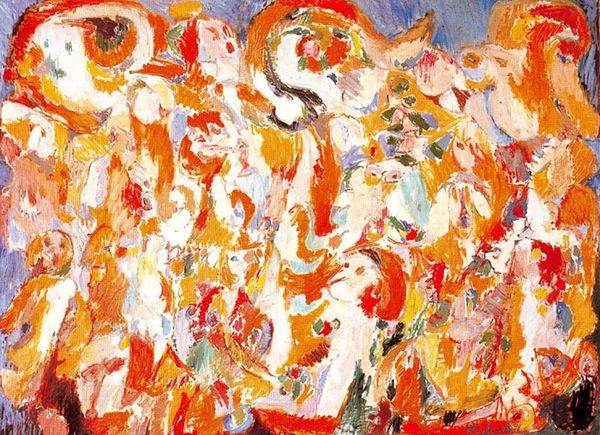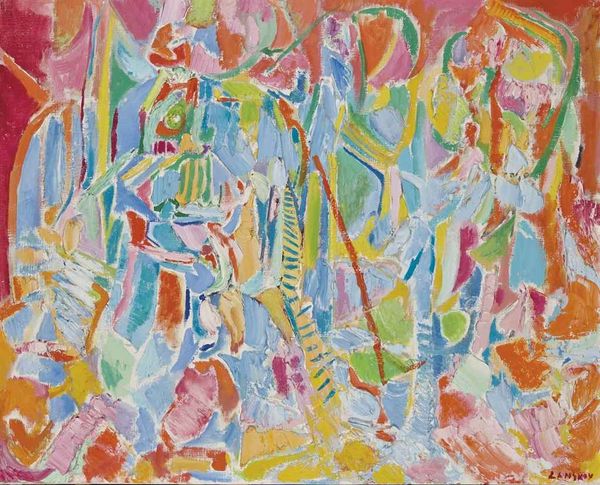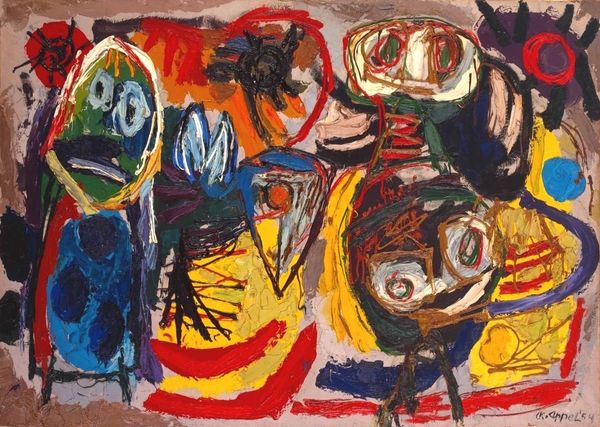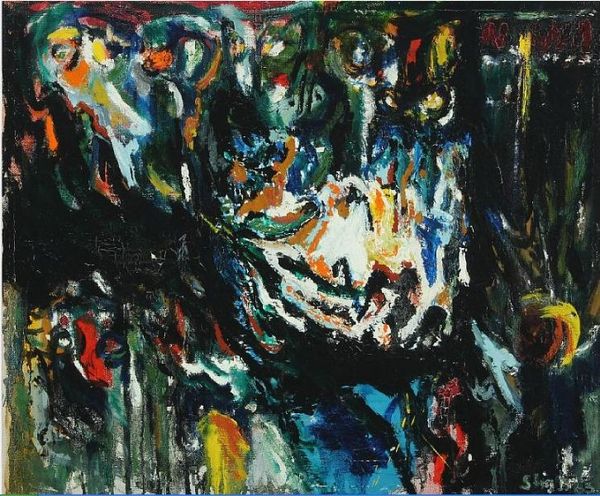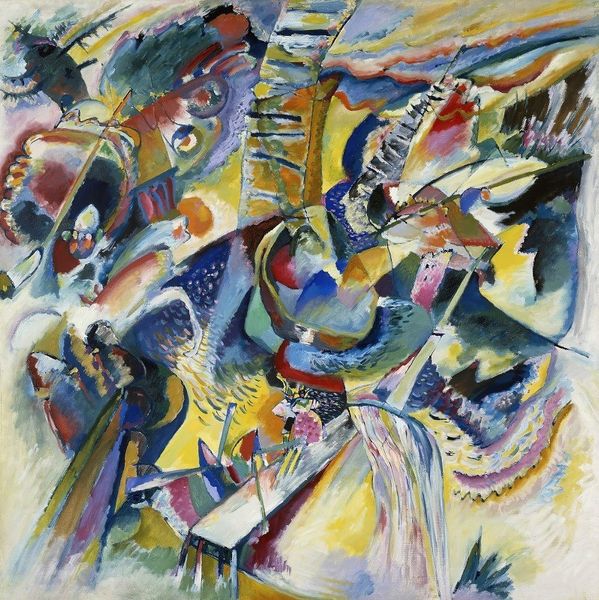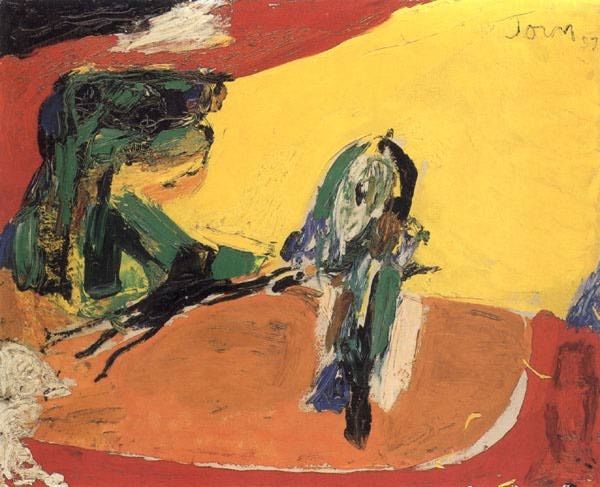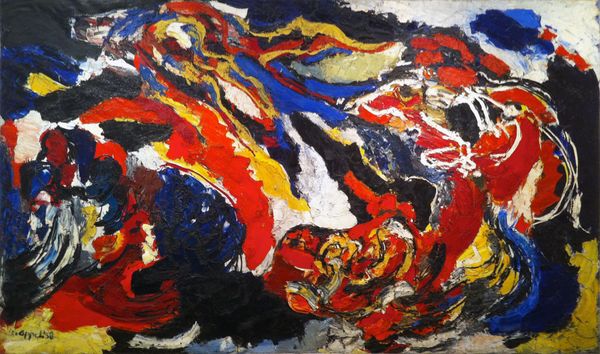
#
cobra
Copyright: Asger Jorn,Fair Use
‘In the Beginning Was the Image’! That was the dramatic title given to this oil and acrylic painting by the Danish artist Asger Jorn in 1965. The phrase has religious connotations, referencing the Christian story of Creation. Epic in scale, the painting is one of Jorn’s largest. 🖼️ Asger Jorn (1914-1973) was born into a Christian fundamentalist family – a background which clearly informed his art. During his time in Paris, Jorn co-founded the avant-garde art group ‘CoBra’. The group was born in the late stages of the Second World War, and aimed to connect countries across borders. CoBrA members prioritised experimental modes of creation, with an emphasis on freedom and childlike expression. ️ ‘In the Beginning Was the Image’ (1965) takes inspiration from children’s drawings. It is alive with bold primary colours. There are no recognisable shapes – rather, the canvas is packed with chaotic swirls of thickly layered paint. This builds a vibrant energy and spontaneity. We get the sense that Jorn painted in quick and violent strokes. The viewer can almost imagine him in the act of creation, impulsively flinging paint across the canvas. Do you think this technique is more natural or authentic than planning a composition and carefully drawing the shapes? There is no single correct interpretation of this painting, as Jorn intended it to be completely abstract. Some people see human faces, while others believe the painting might hint at war and conflict. The title of the work, ‘In the Beginning Was the Image’, might offer some other clues about its content. What do you think?
Comments
No comments
Be the first to comment and join the conversation on the ultimate creative platform.

